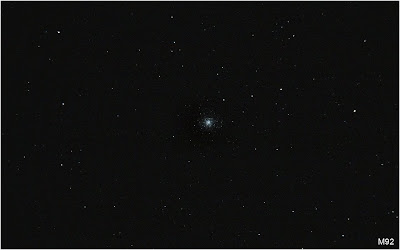The nebula was tiny. Also, since the DSLR has a (relatively) large sensor compared to some dedicated entry-level CCDs, the DSO was even smaller in the result. At first, using the LCD display of the DSLR, I thought my subs weren't capturing anything but some colorful noise in the center of the images. However, the noise was a little too consistent and large.
 |
| C2 (NGC 40) - The Bow Tie Nebula in Cepheus |
I've really started noticing now how much coma is in some of these images around the edges. Although I'm able to crop out some of the vignetting and coma, I'm beginning to understand why a field flattener or coma corrector is needed with these faster scopes. Maybe this is also why people enjoy imaging with catadioptric scopes, too. The higher focal length helps reduce some of the coma.







